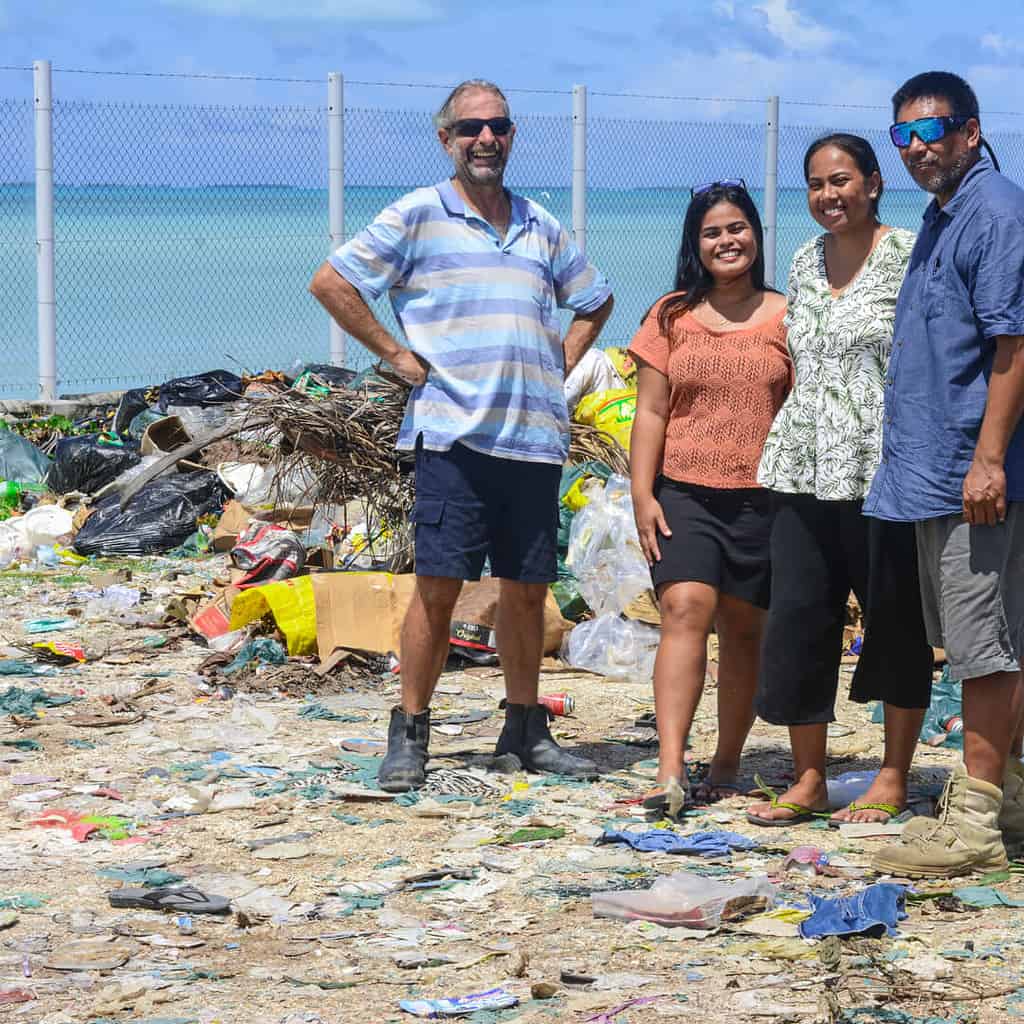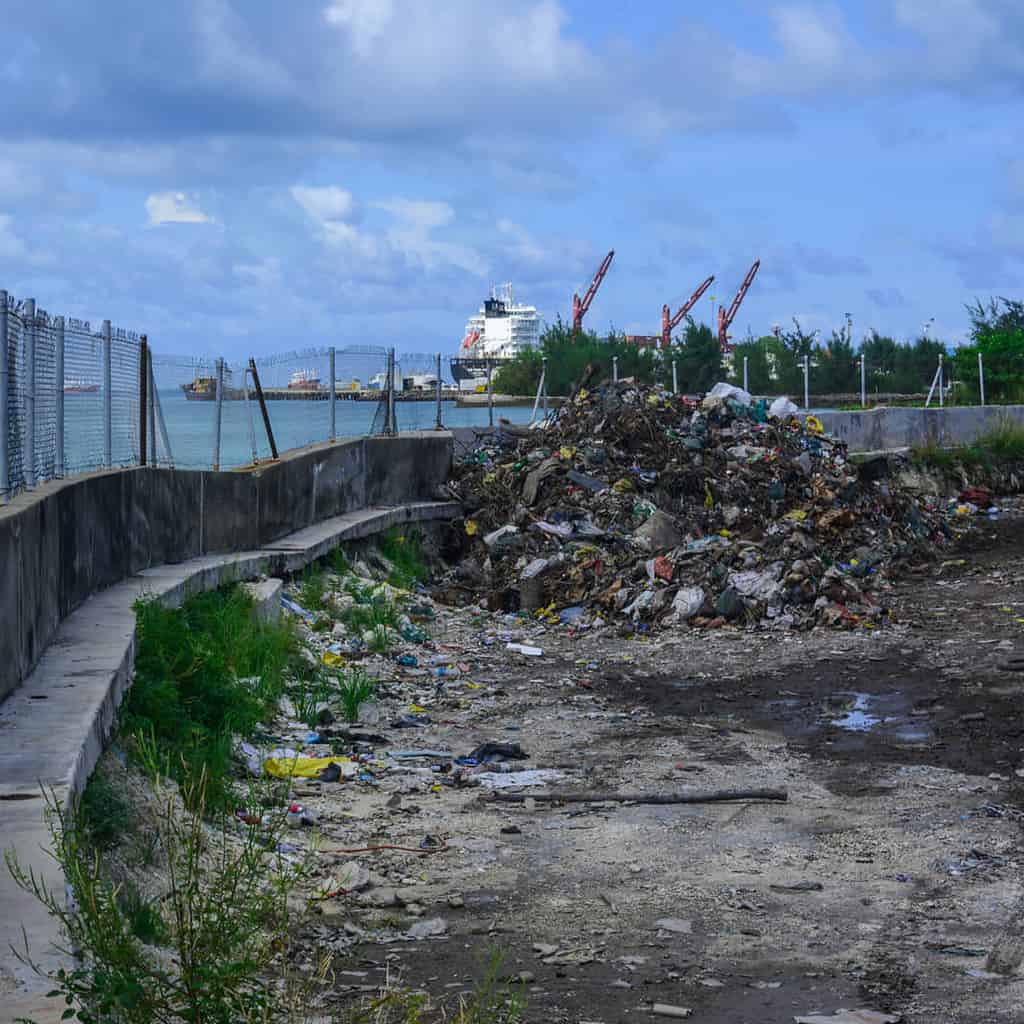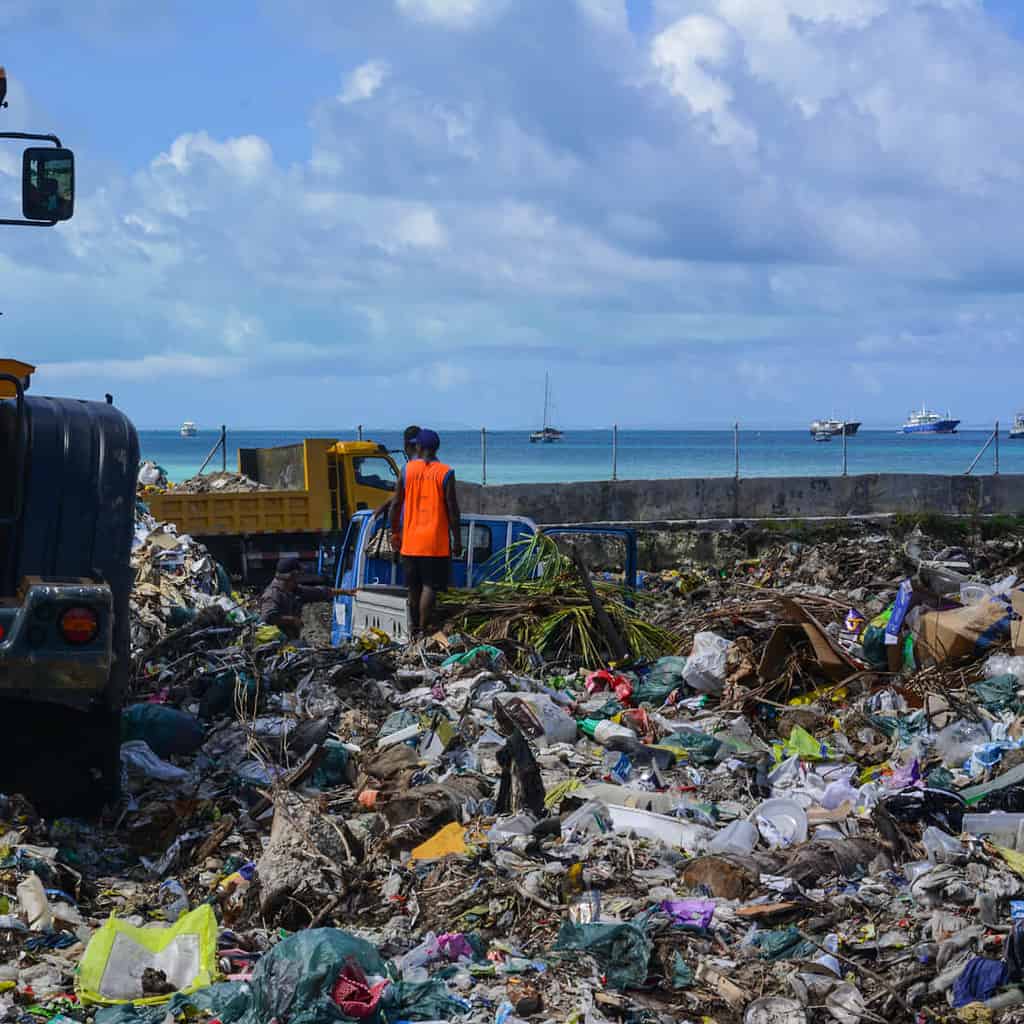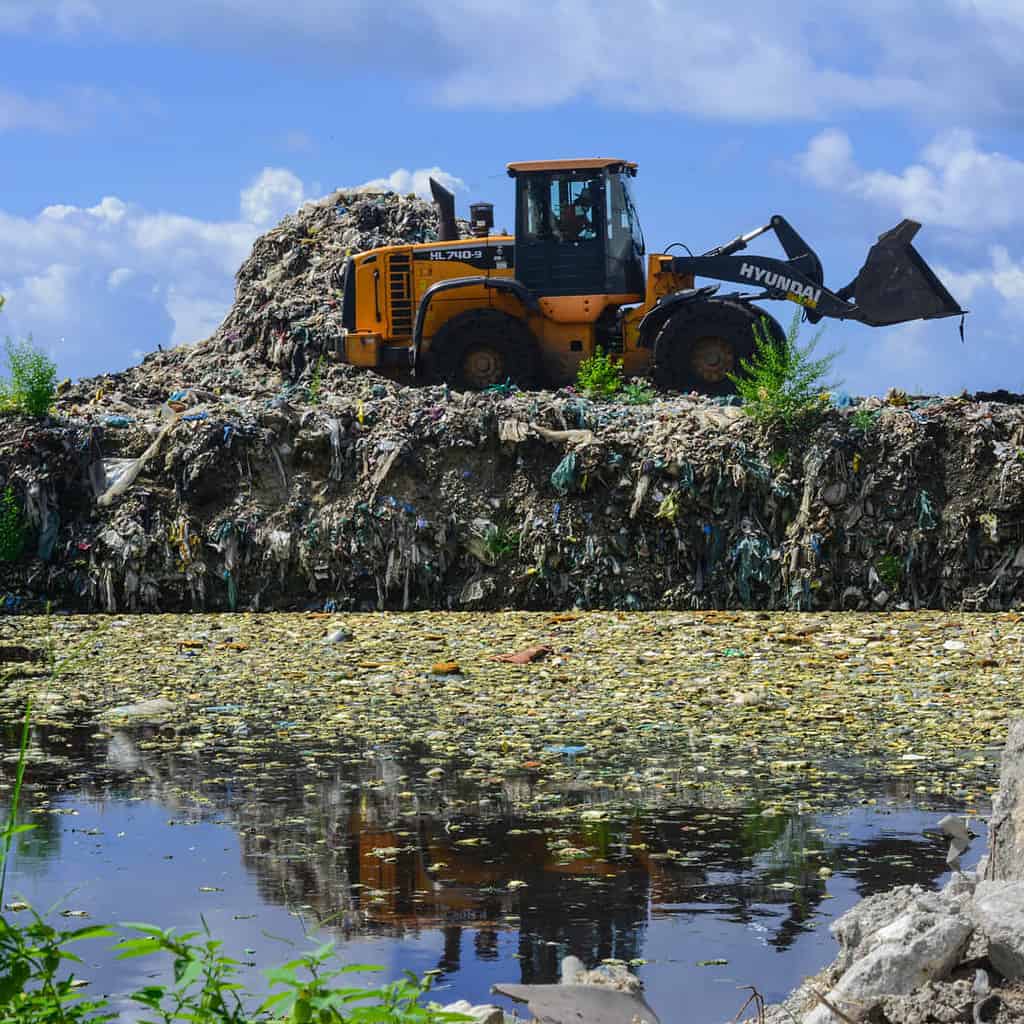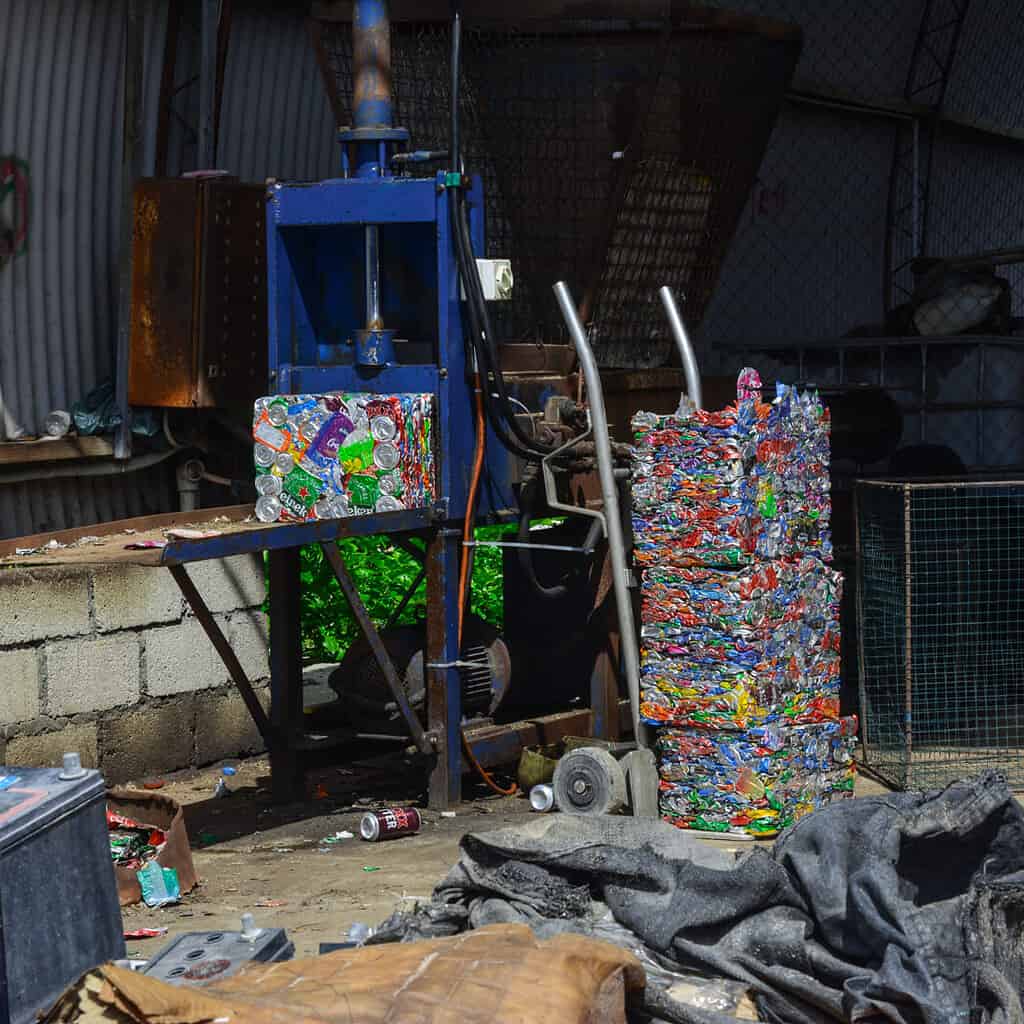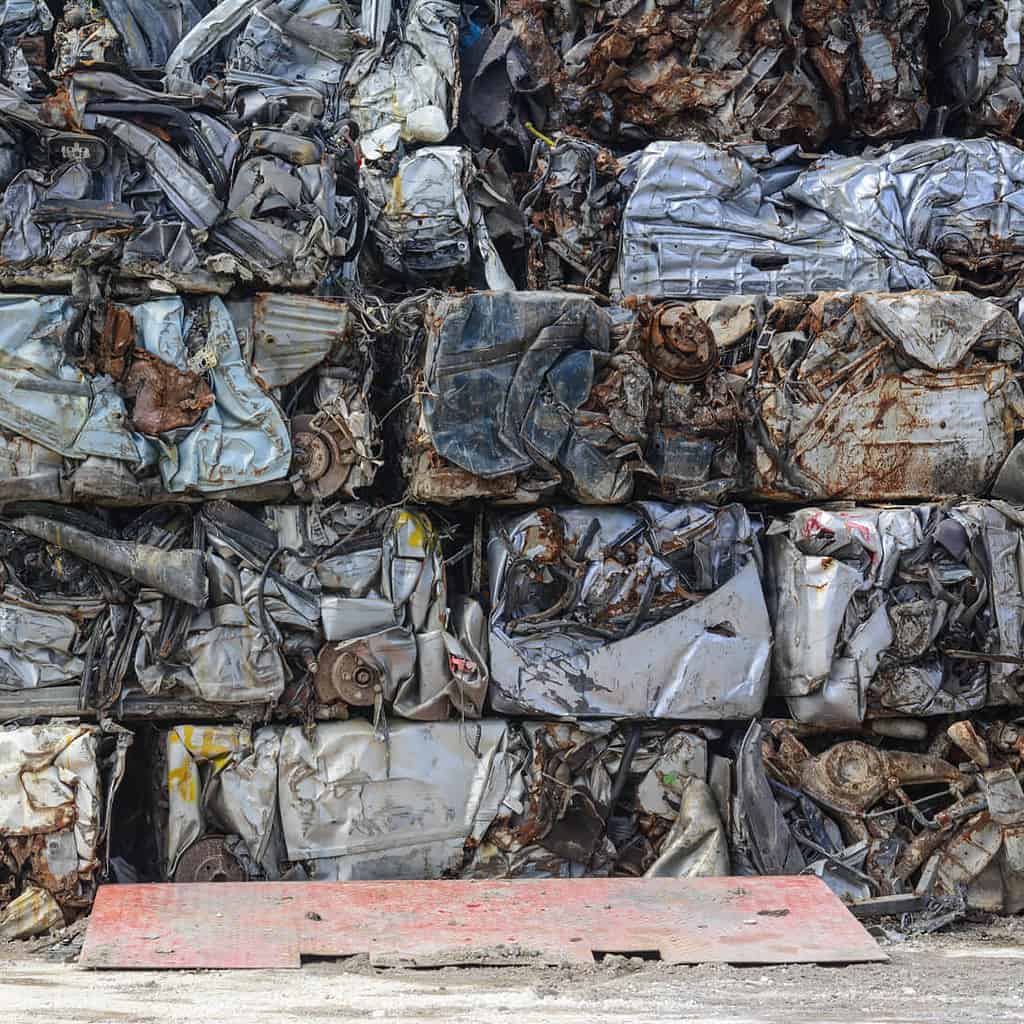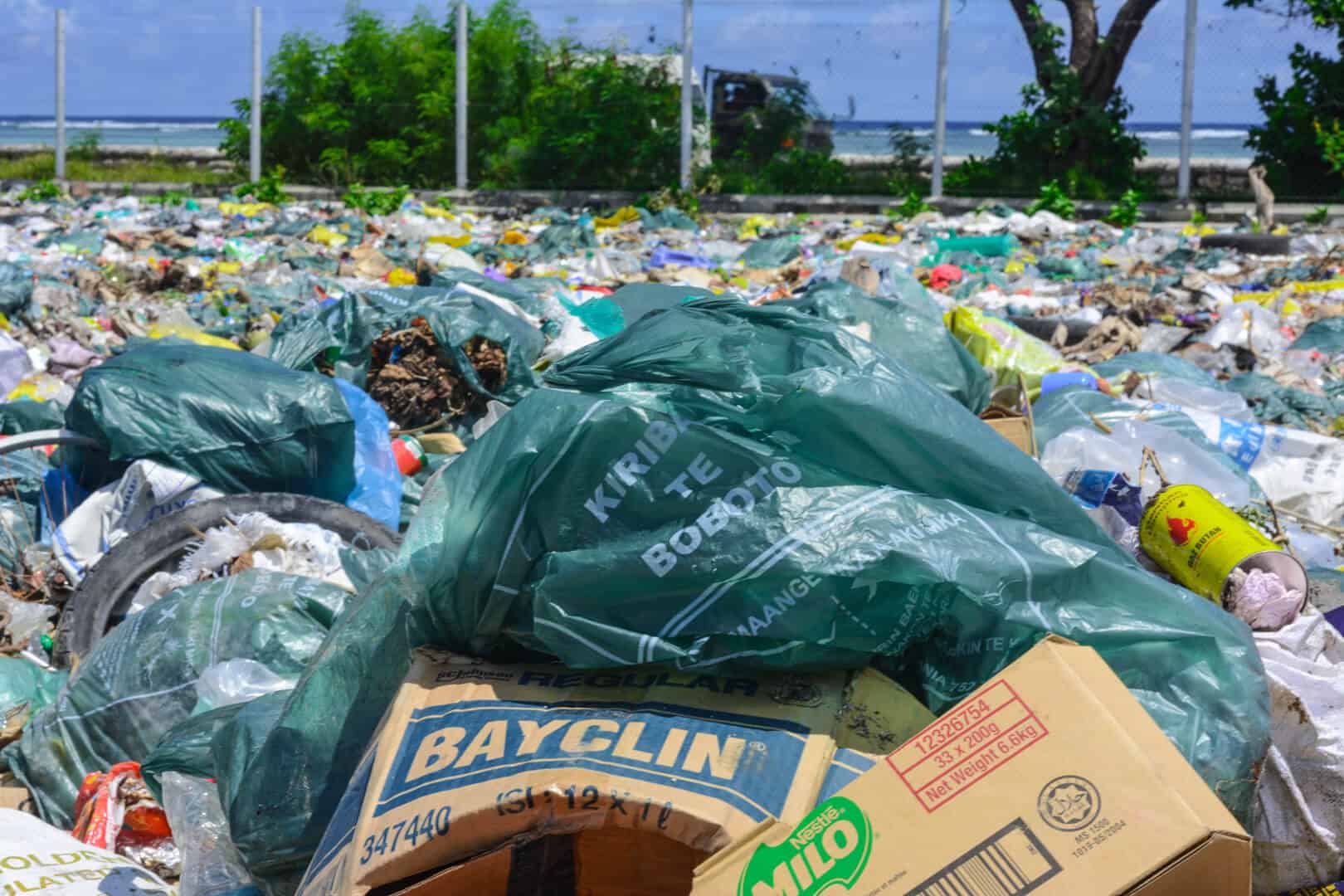Kiribati Te Boboto means Kiribati the beautiful.
It’s a slogan you see almost everywhere on South Tarawa – Kiribati’s administrative capital – where solid waste management used to be a problem that had no real solution.
Today, the problem still exists but is being managed thanks to the ‘mind-altering-approach’ taken by the Environment and Conservation Division (ECD), housed under the Kiribati’s Ministry of Environment, Lands and Agricultural Development (MELAD).
At the beginning of this millennium, solid waste disposal took its toll on Kiribati’s environment – mostly visible along it’s idyllic lagoon and coastline – where aluminum cans, polyethylene terephthalate (PET) containers, plastic bags and packaging became a common eyesore that no one could effectively address.
It wasn’t until 2004 that the Kiribati government made significant changes to its environment legislation, and the management of solid, chemical, and hazardous waste became part of Kiribati laws.
But equally important is the implementation and enforcement of the laws. That’s where garbologist Alice Leney – the ‘grand-daddy’ of Kiribati’s successful recycling program called the Kaoki Maange – enters the picture.
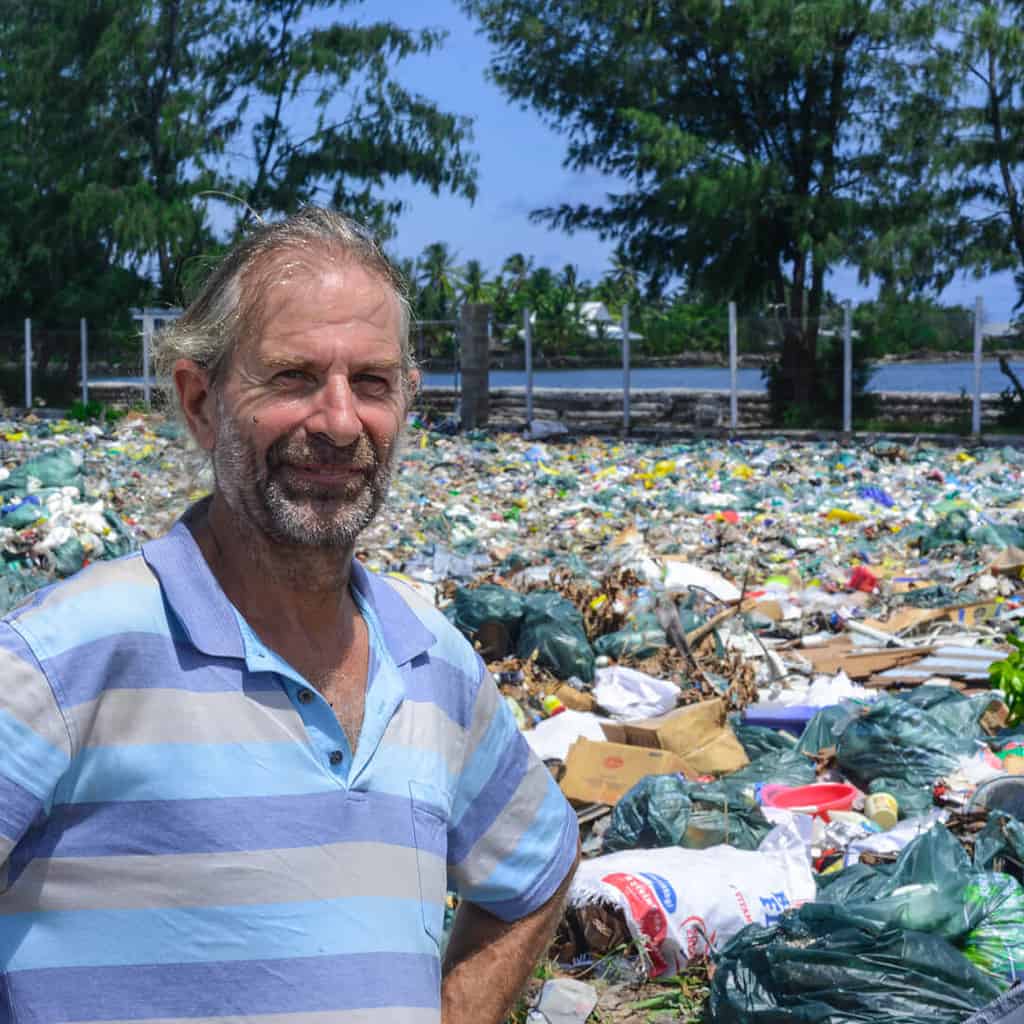
Based in New Zealand but originally from Britain, Leney is back on South Tarawa 20 years after he setup the Kaoki Maange program, this time to lead the Kiribati Solid Waste Management Programme – a New Zealand funded initiative assisting Kiribati’s urban development plans.
Since the inception of the Kaoki Maange in 2003, aluminum cans, PET bottles, and lead-acid batteries are rarely seen littering the island. This is due mainly to the implementation of a container deposit system – where a deposit of AU$0.05 is levied on every beverage container at the point of import, with consumers being able to redeem AU$0.04 when they return containers for recycling.
“We needed to find a vernacular – a word for recycling because no such word exists in the Kiribati language… because maange typically refers to rubbish such as leaves and sticks from dead trees… so in understanding that we are sending back (kaoki) the rubbish that came from the ships (as in aluminum cans and PET bottles) we came up with the term kaoki maange,” Leney said.
Leney added that a “clear, essential element of these waste programs is that they’ve got to be able to name things… and then they’ve got to be able to hang all the understanding onto that name… because we are really in the business of behaviour change.”
That’s how kaoki maange became intimately linked to Kiribati te boboto, because by sending back the rubbish, it is effectively keeping Kiribati beautiful.
As a garbologist, Leney says people often laugh, almost in mockery, when they hear of his profession.
Few guess that the role is actually a scientific one – a crossbreed between an anthropologist and an archeologist – who studies human society and culture by what they consume and discard.
“Most people’s reaction when I tell them I’m a garbologist is that they laugh…think that that’s a joke… and that tells a whole lot about people’s attitude towards garbage and yet we have many people express gravely that waste is a problem.
“But a garbologist puts the people at the centre of the problem because waste is a people problem,” Leney exclaims.
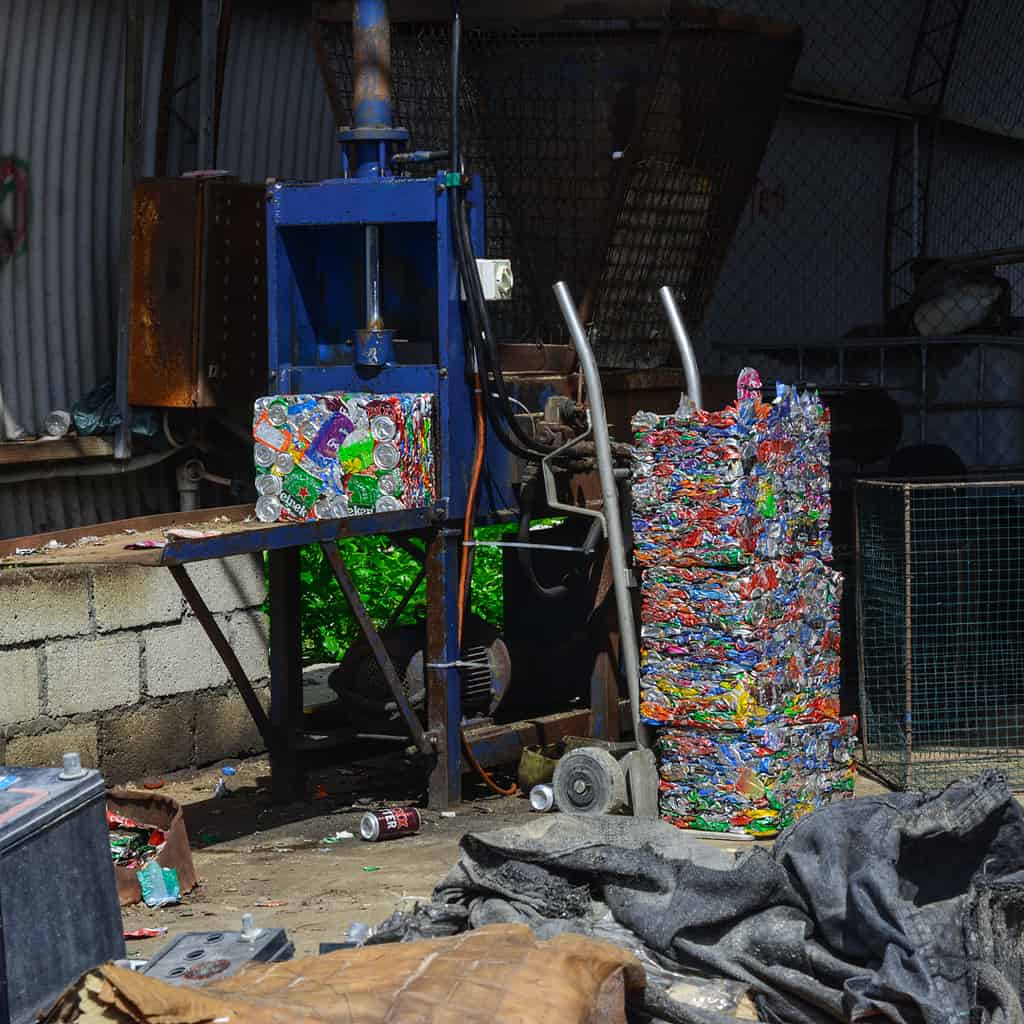
In just over four decades since independence, the Kiribati people have moved from a subsistence lifestyle into a western-oriented one, necessitating waste management legislation and the employment of garbologists like Alice Leney and his team of three young and enthusiastic environmentalists. Together they are helping change Kiribati people’s behaviours about their consumption and waste disposal.
After the nation’s sole main road was upgraded in 2016, the importation of secondhand cars from Japan boomed. But this added to an already existing problem, disposal of end-of-life vehicles (ELV).

Second hand cars imported from Japan to Kiribati typically have a life span of less than a decade due to their sophisticated automotive service requirements, compounded by the highly corrosive conditions of an atoll island. The result is an ugly landscape of wrecked cars dotted across the length of South Tarawa from Bonriki in the east, to Betio in the far west. These cars are made of multiple materials, including plastics.
“Now what we want to do is include cars in the [Kaoki Maange] system,” Leney added. He points out that a car baler machine has been ‘eating’ cars since the beginning of the year.
The Kiribati Ferrous Scrap Waste project, another New Zealand funded project which is supported by MELAD, has surveyed a total of 4,429 car wrecks in South Tarawa alone. The project’s website provides an up-to-date tally of recovered ferrous materials which currently stands at 2189 ELVs removed and 9 shipwrecks ready to be collected.
“What we want to do is to put a deposit on a car when it comes in… so that you can get a refund… so that wrecked car sitting in your yard is worth money,” Leney explains. An addition to the existing deposit and refund legislation under the Special Fund (Waste Materials Recovery) Act 2004, which will require importers of cars to pay a deposit on arrival to cover vehicle scrapping costs.
But whatever waste that can’t be recovered and sent off for processing overseas ends up in a landfill, and South Tarawa’s three main landfills, two in the South Tarawa municipality and the third in the Betio municipality, have just received an overdue ‘facelift’.
A new 12-tonne wheel loader funded by New Zealand, has seen the rubbish in these landfills properly compacted, effectively extending its capacity to operate for a few more years and in the process, creating land that can be used for non-residential purposes.
Single-use plastic, disposable nappies and plastic bags for ice blocks were banned from Kiribati’s supermarket shelves in 2019 and today it’s rare to see any of these items as litter, although disposable nappies, promoted as biodegradable, are still a major component of Kiribati’s landfill.
Leney says an interesting chemical reaction between the landfill leachate (the liquid oozing from landfill waste) and the calcium carbonate coral sand of the landfill base, neutralises the leachate. Data collected by MELAD suggests a fascinating nature-based solution to the problem of treating landfill leachates.
While the current landfills have about three more years until they are completely full and become free land space, Leney and his team are being tasked to build more landfills to cater for the roughly more than 80,000 people on South Tarawa and Betio.
Integral, however, to the success of the landfills is the Green Bag system, a pre-paid garbage bag system operated through a private company, MOEL Trading Ltd, under a contract with MELAD. Operating for more than 10 years, the system provides a custom-made biodegradable garbage bags (that now cost $0.40 a piece), the price of which goes directly towards the collection services for dumping in any of the three landfills in South Tarawa.
Having strong waste management systems in place has made a big impact on Kiribati’s fragile atoll environment but this alone is not the answer to Kiribati’s ongoing waste problem, specifically with plastic pollution. Despite the ban on single-use plastics, other products that are making their way into Kiribati are still being packaged in plastic and therefore the problem is still very much active.
And as more people continue to illegally dump their rubbish into the ocean, MELAD through its Environment and Conservation Division will continue to innovate new ideas that will help shape people’s mentality.
“This is our newest clean-up campaign – Ara BikeMarawa Rerei – so what we are trying to do is to get across to people that the beach and the sea is intimately linked and that there is some sort of ecological awareness there, so that when they dump their garbage into their buibui (a traditional coastal protection mechanism where leaves, sticks and branches are compacted to form a solid structure, like a seawall, that will help dissipate the strength of waves when it reaches the beach), they will know that that garbage will certainly affect our marine environment, and in turn affect us the people.” Leney said.
In the Kiribati vernacular, bike means beach while marawa means sea/ocean and rerei is something that is nice or beautiful, so in essence the campaign name is ‘Our Beautiful Beach’.
“Back when we did the Kaoki Maange, we branded everything with Kiribati Te Boboto because that is the ultimate goal we are trying to achieve – to make Kiribati beautiful, so even this [Ara Bikemarawa Rerei] we will brand it on the top with Kiribati Te Boboto… what we’re trying to do with this is actually to get people to have some pride in their beaches.” Leney said.
Leney says Ara Bikemarawa Rerei is designed not to force people to pick up garbage along the coasts but rather to simply encourage and challenge the people to look after our environment the way we should.
While official efforts ensure that garbage is shipped out to keep Kiribati beautiful, the onus is now on the people themselves – who need to stop illegally disposing of their garbage in the sea, which ironically sends the garbage back to our shores at every spring or king tide.
